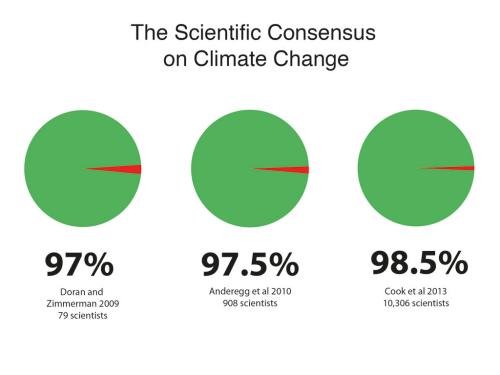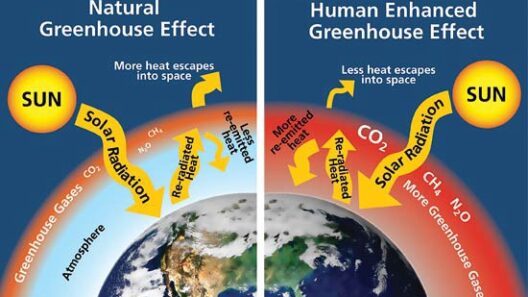In recent years, the term “global warming” has permeated public discourse, often eliciting images of melting ice caps and vanishing species. However, a quiet yet profound threat lurks beneath these visible phenomena—global warming is significantly impacting public health. As the planet warms, the health of individuals and communities across the globe is increasingly jeopardized. To unravel this complex issue, it is imperative to explore the multifaceted ways in which rising temperatures and erratic climatic patterns pose silent threats to public health.
The scientific consensus is irrefutable: the planet’s average temperature is on the rise due to human-induced greenhouse gas emissions. This warming trend creates a backdrop for a plethora of health-related issues. For instance, increased temperatures can exacerbate air quality indices. Polluted air, enriched with particulate matter, can precipitate respiratory ailments such as asthma and chronic obstructive pulmonary disease (COPD). Vulnerable populations—particularly children and the elderly—are predisposed to these health problems, necessitating preemptive action to mitigate the atmospheric changes that lead to deteriorating air quality.
Moreover, the intensification of heat waves is a growing concern. Prolonged exposure to extreme heat can cause heat-related illnesses, including heat exhaustion and heatstroke. The elderly, those with pre-existing health conditions, and low-income communities are particularly susceptible as they often lack access to air-conditioned spaces. The phenomenon of urban heat islands, where cities experience significantly higher temperatures than surrounding rural areas, exacerbates this issue. Therefore, urban planning must incorporate green spaces and reflective materials to alleviate heat retention.
Additionally, the ripple effects of global warming extend to vector-borne diseases. With shifting climatic conditions, mosquitoes and ticks are expanding their habitats, bringing diseases like dengue fever, Zika virus, Lyme disease, and West Nile virus to regions that were previously unaffected. This phenomenon is more than anecdotal; studies indicate a correlation between rising temperatures and an increased range of these vectors. Consequently, public health systems must adapt and respond to the evolving landscape of infectious diseases, emphasizing the importance of vigilant surveillance and proactive measures.
The implications of global warming are not limited to physical ailments; mental health is likewise under siege. As extreme weather events become more frequent—hurricanes, floods, and wildfires—communities are left grappling with collective trauma and anxiety. The fear of future disasters and the grief following the loss of homes and loved ones can lead to long-term psychological effects. Addressing mental health in the context of climate change is imperative; integrating mental health support into disaster response frameworks can help communities rebuild not only physically but also emotionally.
Food security is another critical area impacted by global warming. Climate variability affects agricultural productivity, threatening the stability of food supply chains. Droughts, floods, and shifting growing seasons can impair crop yields, leading to food shortages and increased prices. Consequently, populations, particularly in lower-income regions, may face malnutrition and food insecurity, heightening the risk of chronic diseases. Food systems must be transformed to withstand climatic challenges, fostering resilience through sustainable farming practices and local food systems.
Moreover, global warming exacerbates pre-existing health disparities. Low-income communities and marginalized populations bear the brunt of climate change impacts. These groups often reside in areas with inadequate infrastructure, lacking access to healthcare services, and are less equipped to adapt to heat or evacuate during natural disasters. Thus, addressing health inequities—rooted in social determinants like economic status, education, and environmental exposures—becomes paramount in combating the health effects of climate change.
Planning for a healthier future necessitates a multi-faceted approach. Public health policies must prioritize climate change mitigation. Transitioning to renewable energy sources can significantly reduce greenhouse gas emissions, benefiting air quality and public health simultaneously. Implementation of stricter emissions regulations, promoting energy efficiency, and investing in public transportation can contribute to improved community health outcomes.
Furthermore, education plays a crucial role in enhancing public awareness about the interconnectedness of climate change and health. Governments, NGOs, and educational institutions must collaborate to disseminate accurate information about the health risks posed by climate change. Such initiatives should empower individuals with knowledge, enabling communities to advocate for healthier environments and sustainable practices.
In summary, global warming represents a silent threat, intricately linked to public health. Its impacts manifest in various forms—deteriorating air quality, rising vector-borne diseases, mental health challenges, food insecurity, and heightened health disparities. Addressing these issues requires comprehensive strategies that include climate change mitigation, public health policy reform, education, and community engagement. As the world grapples with the reality of a warming planet, it is imperative to recognize the profound implications on human health. The time for action is now; a healthier planet equates to a healthier population.








